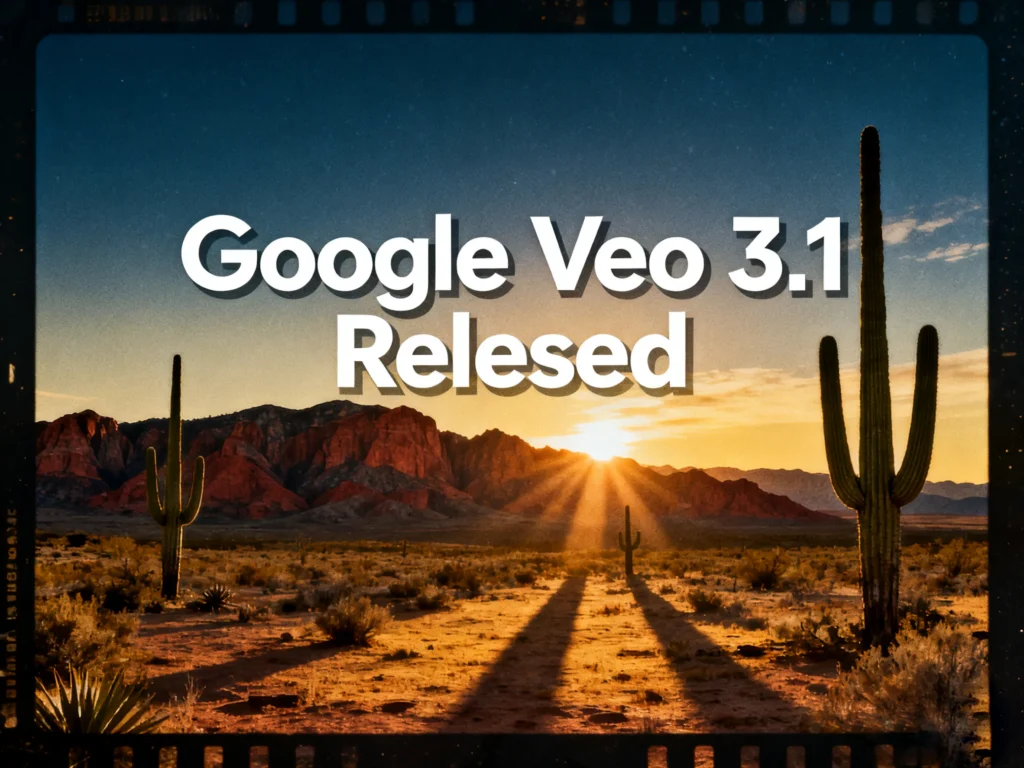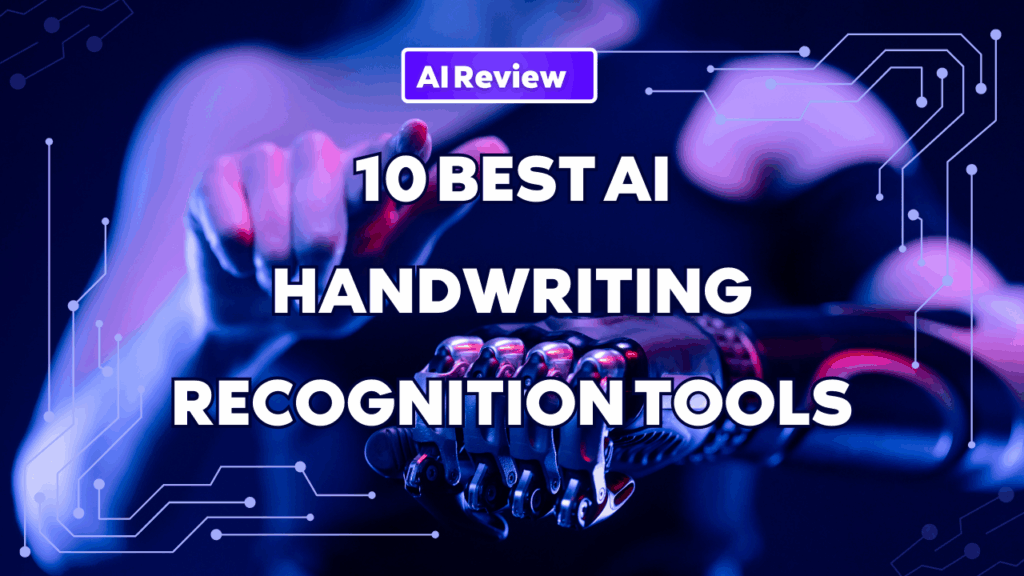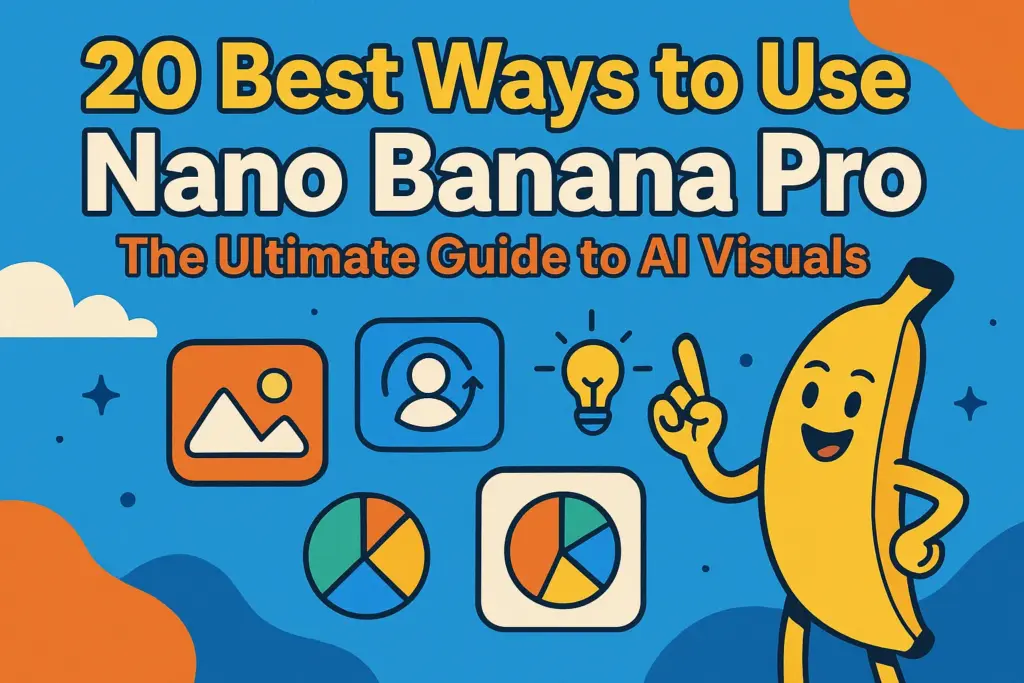の AIビデオ生成 2025年には、この分野は驚異的なスピードで進歩し、 OpenAI ソラ 2 およびxAI ゴルク想像v0.9 最近の業界の議論を席巻している。しかし、Googleは競合他社に先を越されるつもりはない。2025年10月15日、このテクノロジー大手は自社のAIビデオプラットフォームに画期的なアップデートをリリースした。Google Veo 3.1今年のトップ AI ビデオ生成ツールとしての地位を固めました。
これは単なるマイナーリフレッシュではありません。 ヴェオ3.1 クリエイティブなコントロール、リアリズム、制作品質を大幅に向上させ、 AIビデオ作成つまり、一貫性と長さです。最も高度なものをお探しなら テキストからビデオへ または 画像からビデオへ 道具Google の AI Studio によるこの最新版は、画期的なものです。
読み進めると、Veo 3.1 の優れた機能、前バージョンや Sora などの競合製品との比較、そして今すぐ使い始める方法などについて知ることができます。

Google Veo 3.1 の新機能は何ですか?
Veo 3.1 アップデートは、クリエイターがこれまでにないほど自由にストーリーをコントロールできるプロフェッショナル グレードの機能を提供することに重点を置いています。
一貫性と物語のコントロールの強化
AIビデオで最も要望が多かった機能の一つは、複数のショットにおけるキャラクターとシーンの一貫性です。Veo 3.1は、この問題に正面から取り組みました。
- 参照の遵守の改善: 生成されたビデオをガイドするために最大 3 つの参照画像を使用し、キャラクター、製品、または特定の美観がシーケンス全体で一貫していることを保証します。
- より豊かなオーディオと A/V 同期: Veo 3 ではネイティブ オーディオが導入されましたが、Veo 3.1 では画面上のアクションとよりよく同期した、より豊かで自然なサウンドが提供され、全体的なリアリズムが向上します。
より長く構造化されたビデオシーケンスのためのツール
シングルクリップ生成は高速かつ高品質を維持しながら、Veo 3.1は より長い コンテンツ作成ワークフロー:
- ビデオ拡張とシーンの継続性: ユーザーは、Gemini API と Flow の統合ワークフローを通じて、標準の 8 秒のクリップ制限を超えて、Veo で生成されたビデオをシームレスに拡張し、最終シーケンスをはるかに長くできるようになりました。
- 指定フレーム生成: 補間するビデオを生成することで監督のコントロールを獲得 間 最初のフレームと最後のフレームを指定します。これにより、正確なショットプランニングとスムーズなトランジションが可能になります。
可用性と統合の拡張
Google は、強力な AI ビデオ ジェネレーターを開発者や企業がより利用しやすくしています。
- Google Flow と Gemini の統合: Veo 3.1 は Google Flow (強力で柔軟なビデオ エディタ) に統合され、Gemini API および Vertex AI 経由でアクセスできるようになり、複雑なアプリ レベルのビデオ生成ワークフローが可能になります。
- 強化されたリアリズム: Google は、実物に忠実なテクスチャのレンダリングが改善され、クラス最高の画質と非常にフォトリアリスティックな映像品質が維持されていることを報告しています。
Google Veo 3.1 vs. Veo 3: 細部のさらなるコントロール
| 特徴 | ヴェオ3 | ヴェオ3.1 | クリエイターへの影響 |
| キャラクターの一貫性 | 良い | 優秀(参照画像の密着性が向上) | マルチショットの物語的なストーリーテリングに不可欠です。 |
| オーディオ品質 | ネイティブオーディオあり | より豊かで自然なオーディオとより優れた同期 | 箱から出してすぐに高い生産価値が得られます。 |
| 参考画像 | 限定/変動あり | 最大3枚の参照画像(アセット画像) | 視覚的なスタイルと主題に対する前例のない制御。 |
| ビデオの長さ | 最大8秒(単一クリップ) | 最大8秒(単一クリップ)、拡張ワークフローの強化 | Flow/API を介して数分間のシーケンスを有効にします。 |
| フレームコントロール | 限定的な補間 | 指定された最初/最後のフレームの生成 | 正確なトランジション制御とショット計画を可能にします。 |
Google Veo 3.1 の使い方: アクセスとワークフロー
Veo 3.1 は、現在、次の 2 つの主なチャネルを通じて、有料の Gemini ユーザーと開発者に提供されています。
クリエイター向け: Gemini アプリ & Flow Editor
Gemini アプリ: 有料ユーザーは、テキスト/画像のプロンプトから直接ビデオを生成したり、オブジェクトを編集したり、シーンを拡張したりできます。コーディングは必要ありません。
Flow Film プラットフォーム: Veo 3.1 をプロフェッショナル ワークフローに統合し、AI 生成クリップと従来の編集ツールを組み合わせて、長編映画品質のプロジェクトを実現します。
開発者向け: Gemini API &頂点AI
Google Cloud の Vertex AI で利用可能な Veo 3.1 API を使用して、カスタム ソリューションを構築できます。ユースケースには以下が含まれます。
動画全体でロゴの色やフォントを複製するブランド コンテンツ ジェネレーター。
事前に生成されたシーンに製品のバリエーションを挿入する動的広告ツール。
ユーザーがシーン拡張をトリガーするインタラクティブなビデオ エクスペリエンス。
Google Veo 3.1 と競合製品の比較: 自分に合ったツールを選ぶ
以前の記事では、新しくリリースされた ソラ2 そして Grok imagine 0.9、 この記事では、現在人気のあるゲームの主な特徴、ターゲットユーザー、世代の品質を比較します。 テキストからビデオへのジェネレーターGoogle Veo 3.1 の明確な利点を強調しています。
| プラットフォーム / バージョン | コア機能 | 対象ユーザー | 出力と品質 | 価格 | 強み | 制限事項 / 注意事項 |
| Google Veo 3.1 | テキストからビデオへ、画像からビデオへ、ネイティブオーディオ(会話、環境音)、シーン拡張、光と影の編集、「フレームからビデオへ」、「材料からビデオへ」 | クリエイター、マーケター、映画製作者、短編コンテンツ | 最大約1分(延長)、基本8秒、720p / 1080p、16:9および9:16 | Gemini Pro / Flow / Vertex AI による有料プレビュー | ネイティブオーディオ同期 Flowによる組み込み編集 リアルな照明コントロール | – 期間はまだ限られています – Gemini/Vertexへのアクセスが必要です |
| OpenAI ソラ 2 | テキスト/画像入力 → ビデオ、シーンのリミックスと拡張、オーディオの同期 | クリエイター、教育者、ソーシャルメディアビデオ | 最大20秒; 720p / 1080p | プロレベル(ChatGPT Pro / Business) | ハイリアリズムと物理学 マルチフォーマット出力 | – ウォーターマーク(無料プラン)– 期間制限 |
| xAI Grok想像0.9 | Grokエコシステムにおけるテキストからビデオへの変換、画像と対話によるマルチモーダル | xAI / Grokコミュニティ、コンセプトクリエイター | 約1080p(ベータ版) | クレジットベースのプラン($10~$99階層) | Grok AIに統合 高速でスタイリッシュな結果 | – 初期段階のビデオ品質 – 長さとツールの制限 |
| 滑走路 Gen-3 | テキスト/画像→ビデオ;編集、モーションコントロール、フレーム補間 | クリエイティブプロフェッショナル、制作チーム | プランごとに異なります。 720p – 4K | 月額$12から(プロプランあり) | 成熟したエディターとコントロールツール コラボレーションサポート | – 高価格帯– 無料プランに透かし |
| ピカラボ(2.2) | テキスト/画像 → ビデオ、様式化されたフィルター、モーションプロンプト(パン、ズーム)、キーフレームトランジション | 短編・ソーシャルクリエイター | 5~10秒、最大1080p | 無料+クレジットプラン | クリエイティブスタイル シンプルなUI | – 短いクリップのみ – 複雑なシーンのリアリティが限られている |
比較表と分析に基づいて、Google Veo 3.1 が主要な競合製品に対して持つ利点を簡単にまとめると次のようになります。
映画制作者向けに設計: Veo 3.1 は、シーン拡張や先頭フレームと末尾フレームの生成などの強力なシーケンス編集ツールを備え、実用的な映画制作を重視しており、プロフェッショナルなストーリーテリングを作成する際に優位性を発揮します。
統合ネイティブオーディオ: 効果音、セリフ、そして映像と同期した環境音までも瞬時に生成し、シーンにリアリティをもたらします。個別のオーディオ処理を必要とするモデルと比較して、Veo 3.1はポストプロダクションプロセスを大幅に簡素化します。
Google Veo 3.1アップデートは、より豊かなオーディオ調整、柔軟なナレーションコントロール、よりリアルな画質など、機能面のアップグレードに重点を置いています。AI映像制作ツール「Flow」に統合されたきめ細やかな動画編集機能と組み合わせることで、これらのアップデートは、Googleのモーショングラフィックス生成における技術革新を明確に示すだけでなく、プロフェッショナルAI動画市場への参入という明確な意欲を改めて示すものでもあります。映画、ブランド広告、企業研修ビデオなどを効率的に制作する必要があるチームにとって、Veo 3.1はGoogleエコシステムとの互換性を備えており、既にほとんどの商業ニーズに対応可能です。
しかし、業界の声は注目に値します。比較テストの結果、一部のAIブロガーは、Veo 3.1のコアモデルはまだ大きな飛躍を遂げておらず、画像が時折「油っぽく」人工的に見え、リアリズムの点ではOpenAI Sora 2に遅れをとっていると指摘しています。つまり、どんなAIビデオツールも真に完璧なものは存在しないということです。エコシステムとの統合と実用的な機能を重視するなら、Veo 3.1は試してみる価値があります。究極の視覚的リアリズムと創造の自由を追求するなら、これら2つの巨人の今後のバージョンアップに注目し、自身のプロジェクトのニーズに合わせてテストする必要があります。



